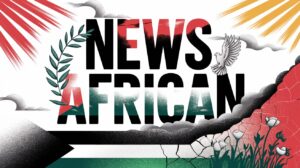At up to $180 per shirt, licensed sporting jerseys have helped Rebel Sport avoid deeper financial pain in its annual results, which where described by a company executive as “disappointing” in its annual general meeting on Thursday.
But an initiative by the Australian Rugby League Commission (ARLC) to undercut other sports’ official merchandise has exposed the markups that fans – and their parents – are forced to pay to don team colours.
A trial of pricing Kangaroos and Jillaroos jerseys at $99.95 has expanded this year, and sales during the Pacific Championships last week at Suncorp Stadium were up more than five times compared to the corresponding fixture last season.
The popularity of the jerseys has highlighted the high price of competing products, and the economics which have helped Rebel Sport establish itself as a core part of Australia’s sporting industry.
According to those in the industry speaking on the condition of anonymity, Rebel Sport – and its 159 stores in Australia – is the most important single outlet for exposure and merchandise revenue for clubs and sporting organisations.
But the terms are often onerous. Rebel typically expects a mark-up of around half the price of a jersey, meaning a shirt a club can sell to Rebel for $60 is listed on shelves for around $120.
Smaller or less attractive teams may have to concede more in negotiations in order to secure a place on shelves, and their limited scale brings additional cost pressures.
A single shirt from China typically costs between $30 and $80 depending on the quality, material and volume ordered. Additional league licensing fees, transport and logistics costs means clubs might be left with little room in negotiations with retailers.
But the sector is going through a difficult time. Anthony Heraghty, chief executive of Rebel’s parent company Super Retail Group, told shareholders on Thursday of a “challenging cost of living environment”.
Total sales at Rebel declined from $1.31b in the 2022-23 financial year to $1.29b last year. The results would have been worse if not for its so-called “fangear” segment.
“Whilst these years results were disappointing, we’ve taken a number of steps to improve our performance in Rebel,” Heraghty said. “In FY25 year to date, we’ve already seen some encouraging results in the key category of footwear and apparel, which we’ve seen some positive sales momentum.”
The annual report also noted one of the few bright spots in the 2023-24 financial year was the strength in licensed apparel and football. “Continued participation in grassroots sport is expected to support demand for equipment and apparel, while strong crowd attendances at AFL and rugby league matches should continue to underpin the sale of licensed products and fan gear,” it said.
after newsletter promotion
The ARLC worked with manufacturer Classic Sportswear to deliver the Kangaroos and Jillaroos product at the new price point, which was run as a trial last year and expanded this year with larger volumes and marketing support.
The move has caught the attention of others in the industry. Some believe the initiative could only be delivered by the ARLC, which can forgo licensing fees and also secure large, national deals with manufacturers, distributors and retailers.
The jerseys have landed on shelves at the start of the peak shopping period ahead of Christmas and the holiday season, just under the key psychological price point of $100.
A Kangaroos jersey is now almost half the price of a NSW State of Origin jersey, which is manufactured by Puma and retails at $180. The green and gold rugby league gear – which includes $90 kids jerseys – also undercuts other sports’ offerings.
According to Rebel’s online store, AFL guernseys retail for $130 or $120, Wallabies jerseys are $170 ($160 for women, $140 for kids), Australian cricket shirts are $130 ($110 for kids and women) and Matildas and Socceroos shirts are $115 (kids $100).
Despite the growth in online shopping, 83% of Rebel’s $1.29b in sales were in-store. Online sales grew $24m last year to $222m.



